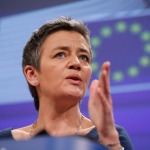
Competitive markets in the New Energy Market Design
The EU energy markets have seen rapid change. The share of renewable energy sources in the EU’s energy mix has increased substantially and is on track to achieve the EU’s 2020 target of 20%. More and more energy infrastructure has been put in place, closing critical bottlenecks in the European transmission networks for gas and electricity. Energy islands such as the Baltic States and Malta, for example, are now an integral part of the EU’s internal energy market. More and more electricity and gas is traded on exchanges and organised market platforms, increasing transparency and liquidity for existing market players and attracting new ones.
Still, more challenges lie ahead. To make almost full decarbonisation of the energy system by 2050 a reality, to prepare for the depletion of indigenous fossil fuels such as
natural gas, and to enable our energy system to meet the increasing demand for flexibility faced with volatile generation and demand, the EU will have to act. Moreover, distortive subsidies and regulatory interventions often weaken price signals that should guide market participants in their investment decisions. The EU needs to adapt its legal framework to cope with these future challenges.
To contain the costs of energy transition, renewable energy sources must be integrated even more into the market. In future, renewable energy producers will be the main players on the energy market. With their increasing importance comes increasing responsibility to keep the system in balance. With the State aid Guidelines on Energy and Environment, the Commission has taken the first steps, requiring renewables producers to take on balancing responsibilities, and making sure that subsidies react to prices. The new EU legislation on Energy Market Design will need to go further and ensure that renewable generation
is prepared for a future with reduced subsidies and where a stronger carbon price supports investment in sustainable energy technologies.
To fully exploit the synergies of the internal energy market, its rulebook needs development. While this includes common rules ranging from third-party access codes to network security rules, the over-arching objective of ensuring smooth operation of the EU energy system from the Baltic Sea to the Mediterranean must be kept in mind. This requires Member States to take into account the impact that their decisions regarding
local market design and regulation, energy mix and infrastructure development, have on their neighbours and, more broadly, on the functioning of a European energy market. The institutions created with the Third Energy Package such as the EU’s regulatory agency ACER and the network organisations ENTSO-E and ENTSO-G must be put to their full use to
create a level playing field in the EU energy market. This will allow consumers to benefit from the lower prices and increased security of supply that undistorted competition and trade in energy can bring.




